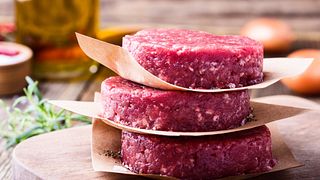middle meats: to the grill and beyond...
March 15, 2019
For many consumers, their love affair with the great taste of beef is found in middle meats – cuts from the Rib, Loin and Sirloin.1 While Ground Beef, strips, cubes, end and minor primal cuts are also popular choices, consumer willingness to pay handsomely for the middle meat experience clearly confirms a special enthusiasm for these cuts. Further, as marbling is prominent and most associated with this central portion of the carcass, today’s Rib and Loin cuts have benefited most from the ongoing quality grade improvements of beef.2
As to which cuts drive Rib, Loin and Sirloin sales, the table below includes the top 10 (along with dollar sales) for each.3 (Sirloin cuts are included with the Loin for this analysis.) Prominent cuts from the Rib include steaks and roasts as well as various Rib cuts, with Ribeye Steak dominating all others. Of the $3.2 billion in 2018 Rib cut sales, the top 10 account for 99% of the total. Compared to total beef meat case sales, Rib cuts account for 12% of dollar sales yet only 7% of pounds (Chart 1). And relative to average beef prices, Rib cut prices have remained quite robust in recent years, averaging 166% of the total beef price in 2018.
Source: IRI/Freshlook, Total US MULO ending 12/30/18; Categorized by VMMeat System
Source: IRI/Freshlook, Total US MULO ending 12/30/18; Categorized by VMMeat System
Amongst Loin (and Sirloin) cuts, Strip Steak is the leading cut, followed by several additional “favorite-steak” options such as T-Bone, Tenderloin and Top Sirloin. Roast cuts also enter the top 10. 2018 Loin cut sales approached $5.4 billion, 84% of which are captured by the top 10. In total, however, this primal is much more diverse than the Rib, as sales for 49 different cuts were recorded this past year. Chart 1 shows Loin cut sales account for 20% of total beef dollar sales while the Loin price premium has declined slightly in recent years to 160% of the retail average price for all beef. By subprimal, Sirloin, Top Sirloin and Tenderloin price premiums improved whereas the relative decrease was driven by less robust Bottom Sirloin, Short Loin and Strip Loin cut prices.4
As several prominent middle meat cuts are steaks, grilling – and hence grilling season – is important. Seasonality plays a major role for roast sales, as well. Chart 2 shows how the best-selling Rib cut sales varied across 2018. In addition to Ribeye steak sales peaking between May and September, Back Rib sales follow a similar pattern (although these ribs are typically destined for the smoker). The cut with the most dramatic seasonal pattern is, of course, the Ribeye Roast. Sales of this traditional holiday, oven-roasted favorite spike so strongly in December, a separate right-hand axis is required. However, recent Ribeye Roast sales have bounced for Easter and even in November, challenging occasions traditionally held by other proteins. Following both seasonal patterns is the Ribeye Roll, where sales jump for Ribeye Roast holidays and grilling season, as well.
Source: IRI/Freshlook, Total US MULO ending 12/30/18; Categorized by VMMeat System
Chart 3 shows 2018 monthly sales for the top-selling Loin and Sirloin cuts. Here, grilling season clearly plays a role – for Porterhouse and T-Bone Steak sales in particular – while Tenderloin Steak and Filet are also a Valentine’s favorite. Tenderloin Roast sales (not on the chart) bounce for December, as well, with 28% of annual sales taking place around these holidays and providing families and friends another special option for their celebrations and guests.
Source: IRI/Freshlook, Total US MULO ending 12/30/18; Categorized by VMMeat System
Middle meat sales propel beef and total meat department sales higher. Loin, Sirloin and Rib cut dollars consistently outperform their pounds while serving as the centerpiece to consumers’ most treasured as well as everyday meal occasions. Steak, anyone?
- Beef Consumer Tracker, NCBA, February 2019.
- Share of Beef Production by Grade, USDA AMS, December 2018.
- IRI/Freshlook, Total US MULO ending 12/30/19; Categorized by VMMeat System.
- Click here for Loin subprimal cut information and here for Sirloin subprimal cut information. Rib cut information can be found here.






